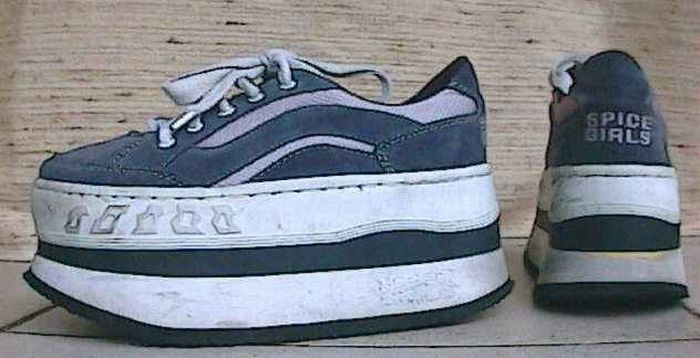|
|
Platform Sneakers
|
History
After their use in Ancient Greece for raising the height of important characters in the Greek theatre and their similar use by high-born prostitutes or courtesans in Venice in the 16th Century, platform shoes are thought to have been worn in Europe in the 18th century to avoid the muck of urban streets. Of the same practical origins are Japanese geta. There may also be a connection to the buskins of Ancient Rome, which frequently had very thick soles to give added height to the wearer. In ancient China men wore black boots with very thick sole made from layers of white clothes, this style of boots are often worn today on stage for Peking opera. During the Qing dynasty, aristocrat Manchu women wore a form of platform shoe similar to 16th century Venetian chopine.
Platform shoes enjoyed some popularity in the United States, Europe and the UK in the 1930s, 1940s, and very early 1950s, but not nearly to the extent of their popularity in the 1960s, 1970s and 1980s, when the biggest, and most prolonged, platform shoe fad in history began at least as early as 1967 (appearing in both advertisements and articles in 1970 issues of Seventeen magazine), and continued through to 1979 in Europe and Britain. (The fad lasted even further in the US, lasting up until as late as the early 1980s.) At the beginning of the fad, they were worn primarily by young women in their teens and twenties, and occasionally by younger girls, older women, and (particularly during the disco era) by young men , and although they did provide added height without nearly the discomfort of spike heels, they seem to have been worn primarily for the sake of attracting attention. Many glam rock musicians wore platform shoes as part of their act.
While a wide variety of styles were popular during this period, including boots, espadrilles, oxfords, sneakers, and both dressy and casual sandals of all description, with soles made of wood, cork, or synthetic materials, the most popular style of the late 1960s and early 1970s was a simple quarter-strap sandal with light tan water buffalo-hide straps (which darkened with age), on a beige suede-wrapped cork wedge-heel platform sole. These were originally introduced under the brand name, "Kork-Ease," but the extreme popularity (perhaps fueled by their light weight and soft leather) supported many imitators. Remarkably, even including all of the knock-offs, and given that they are said to have never been formally designed there was very little variation in style, and most of that variation was limited to differences in height.
|
|









